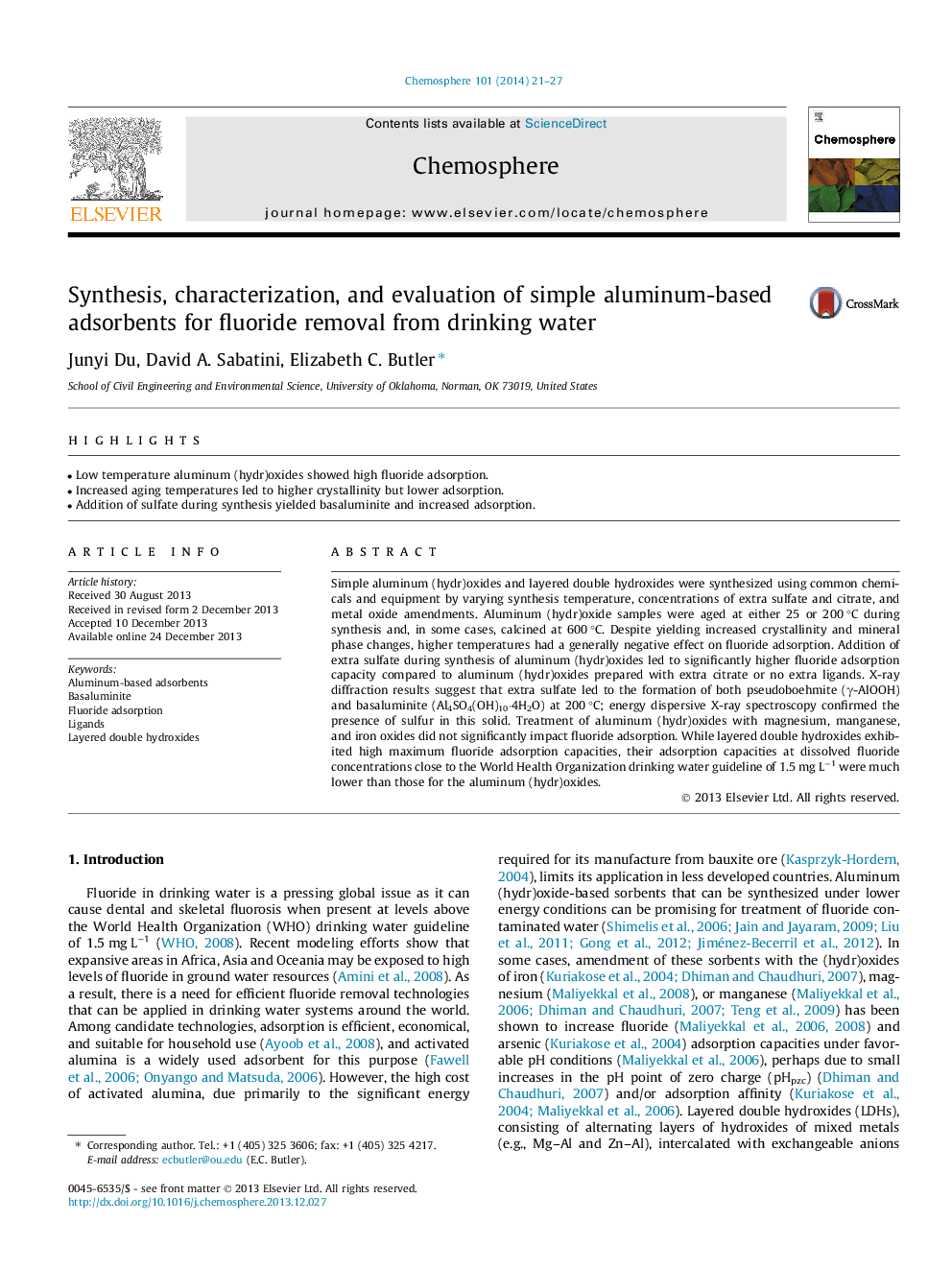| کد مقاله | کد نشریه | سال انتشار | مقاله انگلیسی | نسخه تمام متن |
|---|---|---|---|---|
| 4408902 | 1618870 | 2014 | 7 صفحه PDF | دانلود رایگان |
• Low temperature aluminum (hydr)oxides showed high fluoride adsorption.
• Increased aging temperatures led to higher crystallinity but lower adsorption.
• Addition of sulfate during synthesis yielded basaluminite and increased adsorption.
Simple aluminum (hydr)oxides and layered double hydroxides were synthesized using common chemicals and equipment by varying synthesis temperature, concentrations of extra sulfate and citrate, and metal oxide amendments. Aluminum (hydr)oxide samples were aged at either 25 or 200 °C during synthesis and, in some cases, calcined at 600 °C. Despite yielding increased crystallinity and mineral phase changes, higher temperatures had a generally negative effect on fluoride adsorption. Addition of extra sulfate during synthesis of aluminum (hydr)oxides led to significantly higher fluoride adsorption capacity compared to aluminum (hydr)oxides prepared with extra citrate or no extra ligands. X-ray diffraction results suggest that extra sulfate led to the formation of both pseudoboehmite (γ-AlOOH) and basaluminite (Al4SO4(OH)10⋅4H2O) at 200 °C; energy dispersive X-ray spectroscopy confirmed the presence of sulfur in this solid. Treatment of aluminum (hydr)oxides with magnesium, manganese, and iron oxides did not significantly impact fluoride adsorption. While layered double hydroxides exhibited high maximum fluoride adsorption capacities, their adsorption capacities at dissolved fluoride concentrations close to the World Health Organization drinking water guideline of 1.5 mg L−1 were much lower than those for the aluminum (hydr)oxides.
Journal: Chemosphere - Volume 101, April 2014, Pages 21–27
